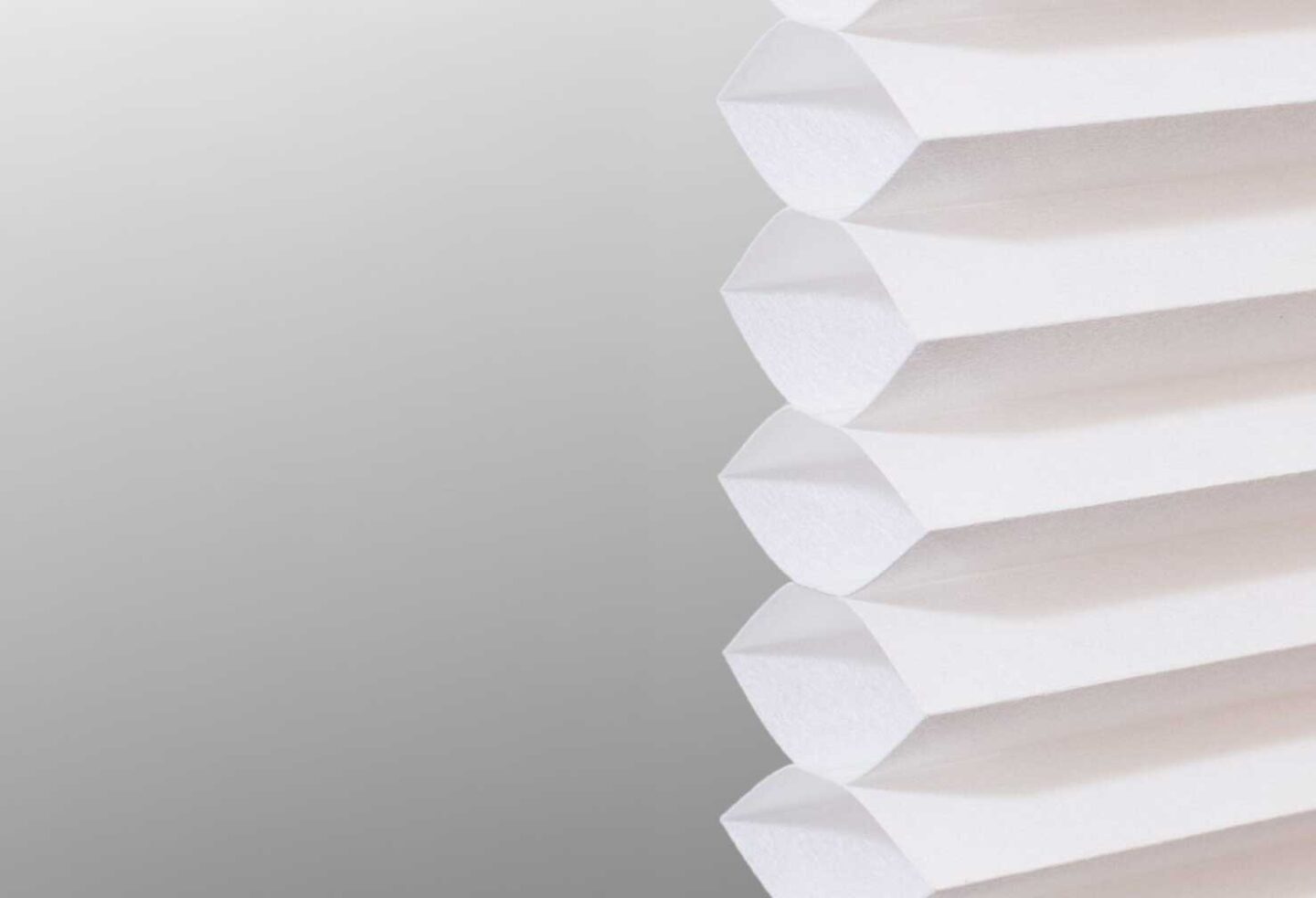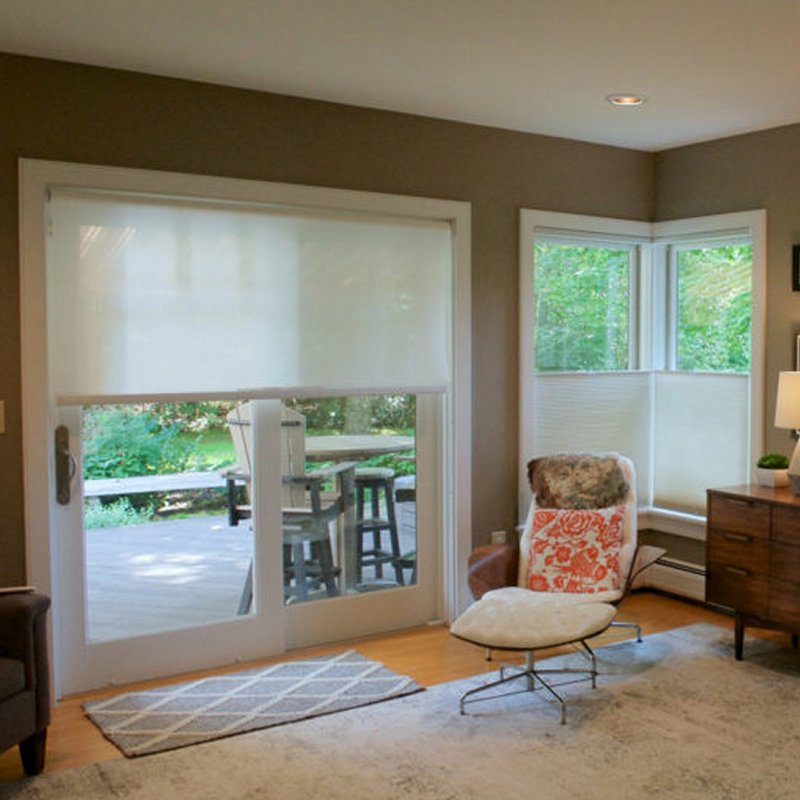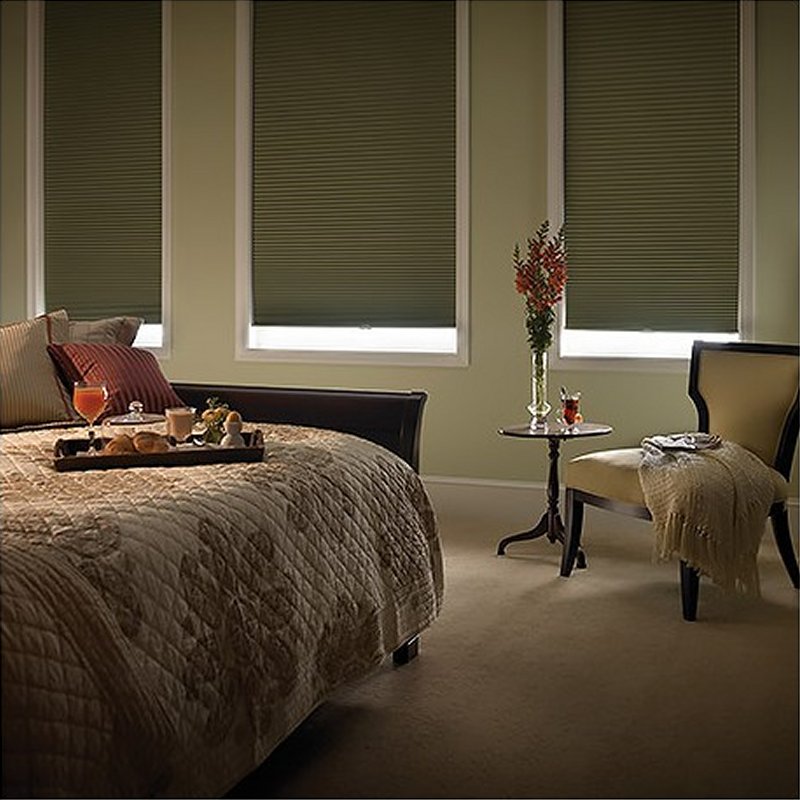When choosing the best window treatments for your home, the decision often comes down to two popular options: cellular shades and blinds.
To help you determine which style fits the needs of your space best, we created a guide that dives into the differences between the two.
1. Energy Efficiency

Cellular shades are the top choice for energy efficiency due to their honeycomb structure, the cells in the fabric that create air pockets that trap warm air in the winter and cool air in the summer. In fact, when it comes to insulating properties, our cellular shades outperform nearly every type of window covering on the market! Check out our page on cellular shade insulation for more.
Blinds, on the other hand, don’t offer the same level of insulation. While materials like wood or faux wood provide some insulating benefits, blinds generally allow more airflow, limiting their ability to maintain room temperature as effectively as cellular shades.
2. Light Control

Because of the variety of fabrics available, such as light-filtering and room darkening options, cellular shades offer excellent versatility in light control.
Blinds, however, are known for their ability to adjust light direction. With a tilt mechanism, you can angle the slats to control light throughout the day, giving you a dynamic way to manage brightness.
3. Style
Cellular shades are available in a variety of colors and designs, making them easily customizable to any space. To see all of the styles we offer at EcoSmart Shades, check out our guide to Cellular Shade styles.
Blinds, on the other hand, have a more traditional appeal, but come in a wide range of materials, including wood, faux wood, and aluminum, allowing them to fit in with both classic and modern interiors.
4. Privacy

The solid fabric design of cellular shades provides full coverage of your window, making them a great option for creating privacy. Many customers love the different styles offered when shopping for cellular shades, such as the top-down/bottom-up style that allows you to let light in from the top while keeping the bottom closed for privacy– great in places like bathrooms and ground floor bedrooms.
Blinds also offer privacy, but small gaps between slats can sometimes compromise it. Although closing the slats provides reasonable coverage, blinds may not feel as completely private as cellular shades, especially in brighter lighting conditions.
5. Maintenance
In terms of maintenance, cellular shades are relatively easy to care for. We recommend regular dusting or vacuuming with a brush attachment to keep them clean. Or, simply use a damp cloth, and even a mild detergent, and gently wipe. For light-filtering fabrics, you can even completely submerge the material in water and mild detergent for a thorough clean.
Blinds, particularly those made of aluminum or faux wood, are also fairly easy to clean, as they can be wiped down with a damp cloth or dusted regularly. This makes them a practical choice for kitchens, bathrooms, or those who prefer low-maintenance decor.
Choosing between cellular shades and blinds depends largely on your specific needs and style preferences. With any questions about which style is best for you, be sure to get in touch with our team of shade gurus, who will provide you with advice tailored to the unique needs of your space.
